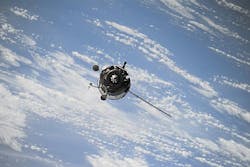China and the next space race
Continue reading original article
The Intelligent Aerospace take:
January 23, 2019-With China ramping up its space program to rival traditional powers like the United States, Russia, and the European Union, James Durso notes that the ascendant Asian power could produce a threat to American sovereignty and calls for allocating more of the federal budget to the National Aeronautics and Space Administration (NASA). Currently, NASA receives around one half of one percent of federal budget. Durso argues that a return to a Reagan-era "peace through strength" strategy and a build up of space capabilities through public and private investment. A "Space Race 2.0" could help not only the U.S. secure its footing above the atmosphere, it could also help drive innovation and prove a boon to companies that produce components for aerospace applications.
Related: China’s successful landing on the far side of the moon is a part of lunar history
Related: China's Chang'e-4 to take the far side of the moon's temperature for the first time
Related: China launched more rockets into orbit in 2018 than any other country
Jamie Whitney, Associate Editor
Intelligent Aerospace
Ready to make a purchase? Search the Intelligent Aerospace Buyer's Guide for companies, new products, press releases, and videos
